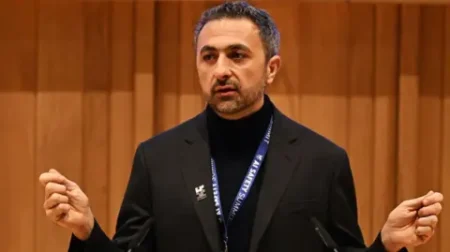**How AI is Empowering Communication in India’s Diverse Landscape**
In an age driven by technology, language barriers remain a significant obstacle for many individuals, especially in a linguistically diverse nation like India with 22 official languages. The advancements in artificial intelligence (AI), especially in translation technologies, are beginning to bridge this linguistic gap, enabling a more inclusive digital experience.
Vineet Sawant, a delivery driver in Mumbai, illustrates the challenges posed by language for individuals in everyday jobs. For two years, he has navigated the bustling streets of the city with a focus on delivering groceries for Zepto, an online grocery service that touts itself as “India’s Fastest Online Grocery Delivery.” Sawant speaks Marathi as his first language but has difficulty with English, leading to various complications when interpreting deliveries. “Everything was in English, and while I could understand some, I was far more comfortable in Marathi,” he recalls, pointing out how this language barrier initially hampered his efficiency at work.
Recognizing the need for a solution, Zepto collaborated with Reverie Language Technologies to introduce an AI translation feature within their app. This innovation allows drivers like Sawant to select from six different languages, including Marathi, which has dramatically improved their ability to comprehend delivery instructions. “Now if the customer writes ‘ring bell,’ I receive that instruction in Marathi,” Sawant describes, signifying how the translation feature has eliminated guesswork, streamlined the delivery process, and allowed him to perform better on the job. His delivery count has risen from ten to thirty parcels per day, a change he attributes to this technological aid.
However, the difficulty Sawant faced is not unique. Professor Pushpak Bhattacharyya from IIT Mumbai highlights the broader implications of this issue within India, a nation grappling with myriad dialects and languages. Without robust technology that accommodates these languages, millions remain excluded from crucial sectors, including education and healthcare. The advent of generative AI systems like ChatGPT has amplified the urgency to develop such language-based technology, as many spoken dialects lack sufficient high-quality training data necessary for effective AI application.
This data deficit is particularly pronounced among less commonly spoken dialects, including those used within tribal communities. “While coarse data is readily available, refined data of high quality is scarce,” Professor Bhattacharyya emphasizes. This translates to an ongoing challenge in training Indian language models with the precision required for effective application, leading to an incomplete representation of the nation’s complexity.
In response, Reverie Language Technologies is actively expanding its AI-driven translation technology across various Indian enterprises. Co-founder Vivekananda Pani notes that while this technology has the potential to facilitate communication, the risk exists of marginalized dialects being overshadowed. Maintaining the rich diversity of language in AI-driven solutions is a challenge that must be addressed, ensuring that technological advancement does not inadvertently diminish linguistic variety.
The government initiative Bhashini represents a substantial effort to tackle many of these challenges. Launched in 2022, Bhashini is focused on developing high-quality datasets aimed at creating comprehensive AI models in the 22 official languages of India. Amitabh Nag, CEO of Digital India’s Bhashini Division, states that the initiative has already developed approximately 350 AI models, handling over a billion tasks. The focus here is on promoting local languages being integrated into public services, thus ensuring that the linguistic and cultural uniqueness is represented effectively.
As Sawant and others benefit from this translation technology, the hope is that similar advancements will expand to even more complex applications, such as healthcare. Kshitij Jadhav’s ongoing project at the Koita Centre for Digital Health aims to tailor AI-assisted advice for those seeking to quit smoking, underscoring the indispensable role language will play in connecting with varied demographics.
Overall, the drive toward language inclusivity in technology reflects a larger narrative of empowerment within India’s diverse society. While challenges remain, the rising tide of AI capabilities promises to create a significant impact on how individuals interact and access vital services, thereby fostering a greater sense of belonging among all citizens regardless of their linguistic background.










